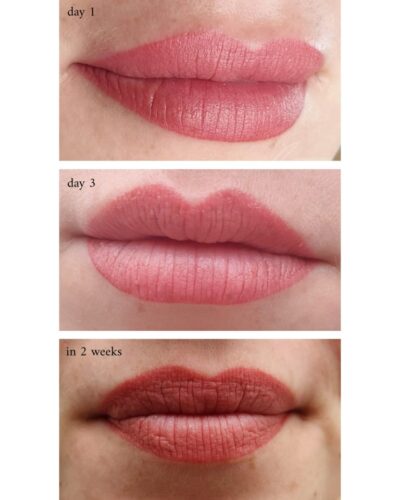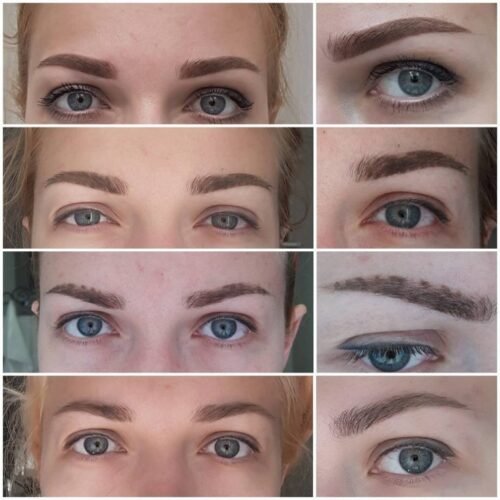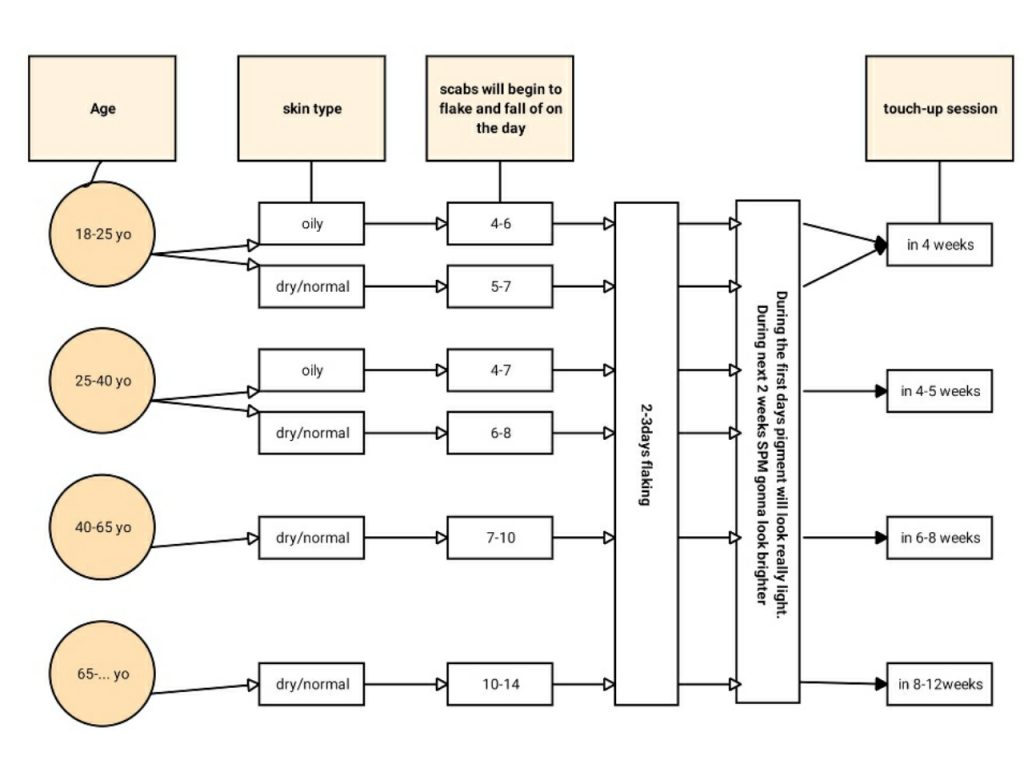Healing Process
Immediately following the procedure, the treated area may appear brighter, darker, or bolder.This is part of the initial healing process, which can last up to a week or a little longer. During the second week, you can expect some flaking of the skin.
It is very important not to pick or peel at the flaky skin as you need to allow the dry skin to come off naturally on its own to prevent premature pigment loss.
The flaking period varies from person to person.
Generally, all dry skin is shed by approximately the end of the second week. Once the flaky skin has fallen off, the treated area will appear softer and lighter. The complete healing process takes about four weeks at which time the true colour and density of the treated area is clearly revealed.
During the follow-up visit, adjustments can be made.
Healing process stage 1: First two weeks
Immediately after your procedure, the healing process begins. You may initially experience redness, skin sensitivity, and possibly some minor swelling.
The appearance of your new Cosmetic or Medical Tattoo will be brighter and thicker than the healed result. Usually after about
4-7 days for eyebrows/medical tattoo, 6-10 days for eyeliner, 3-4 days for lips/scalp micropigmentation, 10-15 days for skin camouflage
the area and top layer starts flaking off. Once the flakes peel off, the cosmetic or medical tattoo area will appear faint. Over the next 2-3 weeks, as the epidermis heals and the pigment settles in the skin, the cosmetic or medical tattoo will look brighter.
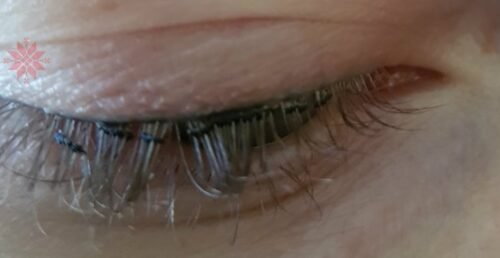
Aftercare:
Cleaning
Gently cleanse the tattooed area twice a day with a gentle, fragrance-free soap and lukewarm water. Pat the area dry with a clean paper towel or allow it to air dry completely. Do not scrub or rub the tattooed area. Avoid using harsh chemicals, cleansers, or lotions on the tattooed area.Moisturizing
After cleaning the tattooed area, apply a thin layer of ointment recommended by your technician, such as Aquaphor or petroleum jelly. Do not over-apply ointment, as this can trap moisture and impede healing. Once the scabbing starts to heal, you can switch to a fragrance-free moisturizer.Healing
It is important to allow the tattooed area to heal naturally. Avoid picking, scratching, or peeling at any scabs or dry skin, as this can lead to scarring or infection. The tattooed area may itch as it heals. Resist the urge to scratch, and instead, gently pat or apply a cool compress to the area.
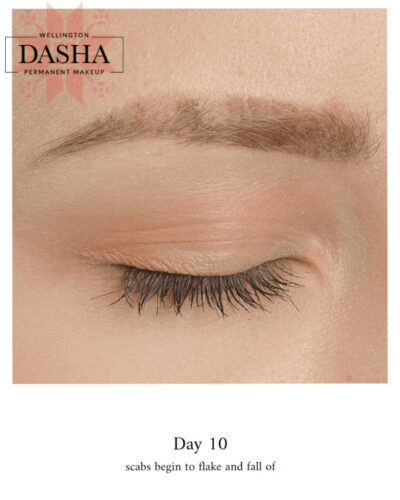
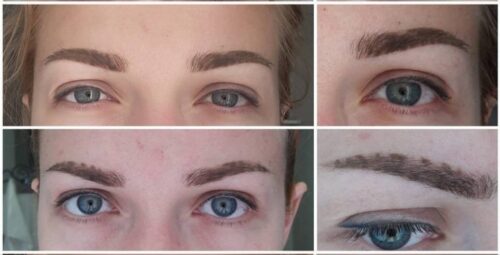
Other aftercare tips
Avoid swimming, saunas, hot tubs, and baths for at least a week after the procedure. Avoid direct sunlight and tanning for at least 4 weeks after the procedure. Wear sunscreen with SPF 30 or higher whenever you are outdoors. Avoid wearing tight-fitting clothing over the tattooed area. Avoid sleeping on the tattooed area. Avoid strenuous exercise for at least a week after the procedure.Healing process stage 2 : Touch up session
In a month's time, once your skin has healed and the pigment has settled, you will see the final results of the first session. The touch-up session can be scheduled in 4 to 8 weeks, depending on your age, skin type, and any medical conditions you may have. Most cosmetic or medical tattoos require a follow-up touch-up session. However, some people heal very well and may not need one. It entirely depends on your individual skin. During the touch-up session, Dasha can make any adjustments necessary to achieve your desired results.
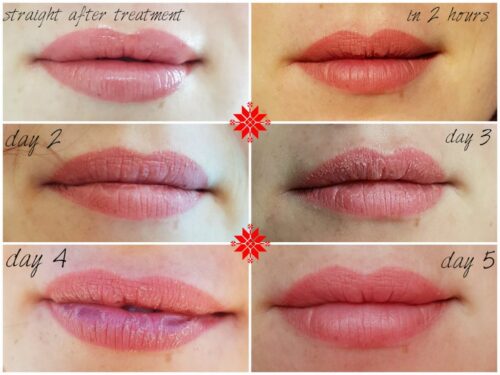
Healing Factors
Cosmetic or medical tattooing is a light peeling of the skin with a needle and pigment, which is less invasive and traumatic than hair plucking. Several physiological factors determine the average speed, healing time, and outcome of the healing process.
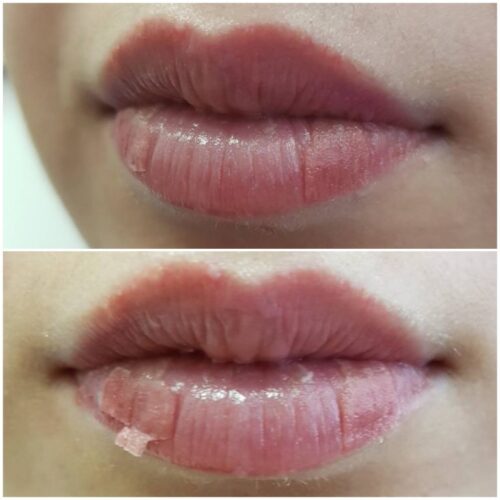
They include:
- Age – Generally, as with any type of skin trauma, older looser skin tends to take a bit longer than younger skin to heal and regenerate.
- Skin Type – Scarring affects different skin types differently based on collagen production. Darker skin, for example, is susceptible to raised keloid scars, while lighter skin may have a more sunken pitted appearance.
- Circulation – Good circulation facilitates healthy fresh blood flow through the wounded area, and cuts down considerably on healing time.
- Estrogen Levels – Estrogen affects wound healing by regulating a variety of genes associated with regeneration.
- Diet – Studies suggest that good nutrition and “power” foods ( that contain proteins, vitamins A, C, and Zinc) promote healing.
- Stress – Stress results in the deregulation of the immune system, which is proven to cause a substantial delay in wound healing.
- Diabetes – Diabetic individuals show a documented impairment in the healing of acute wounds.
- Smoking – Smoking causes a delay in wound healing and an increase in complications such as infection, rupture, leakage, and sometimes even necrosis.
- Exposure To Sunlight – Excessive sun exposure can cause color loss.
- Medications – Some medications may interfere with response to inflammation, platelet function, and an ability to form clots, significantly affecting healing.
